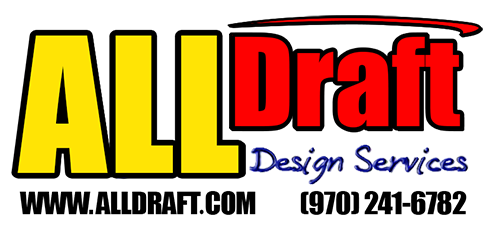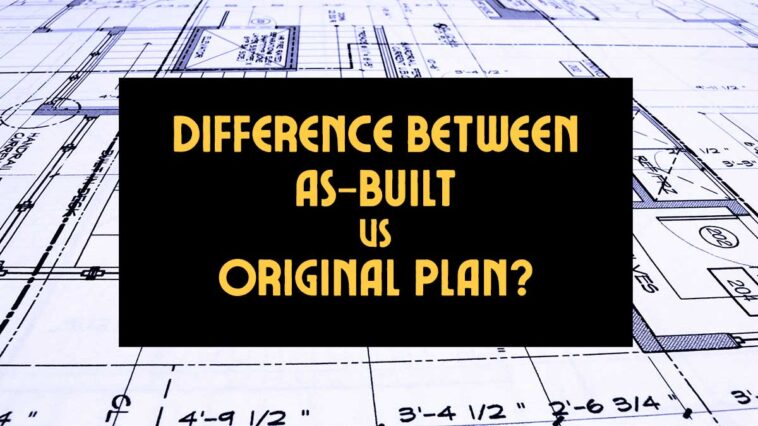In the realm of construction and engineering, precision is paramount. Plans serve as the blueprint for a project, outlining every detail from the foundation to the finishing touches. However, the journey from the drawing board to the completed structure is often fraught with changes, adjustments, and unexpected discoveries. This is where the concepts of “as-built” and “original plan” come into play, representing two distinct stages in the lifecycle of a construction project. In this comprehensive article, we delve deep into the nuances of these terms, exploring their significance, differences, and practical implications.
Origins and Definitions
To grasp the disparity between as-built and original plans, it’s essential to understand their fundamental definitions:
Original Plan: The original plan refers to the initial set of blueprints, drawings, and specifications created at the inception of a project. It embodies the vision, design, and intentions of the architect, engineer, or designer. This document serves as the guiding framework for construction activities, detailing the structural layout, materials, dimensions, and other critical aspects.
In summary, original plans are indispensable in construction as they provide the framework for project execution, ensure compliance with regulations, facilitate communication among stakeholders, enable cost estimation and budgeting, mitigate risks, and uphold quality standards. Deviating from the original plans can lead to inefficiencies, errors, and complications that may compromise the success of the construction project.
As-Built: On the other hand, the term “as-built” pertains to the actual conditions and configurations of a structure or infrastructure element once construction is completed. It represents the real-world outcome, incorporating any modifications, deviations, or alterations made during the construction process. As-built documents provide an accurate reflection of what was constructed on-site, capturing discrepancies between the original plan and the final product.
In summary, as-built plans are essential documents in construction projects, providing a comprehensive record of the completed work, documenting changes and deviations from the original plans, facilitating future maintenance and renovation activities, ensuring regulatory compliance, supporting legal and insurance requirements, and informing future projects and asset management efforts.
Divergence and Evolution
The journey from the original plan to the as-built condition is seldom straightforward. Numerous factors contribute to the evolution and deviation of the project from its initial blueprint:
- Design Changes: Throughout the construction phase, adjustments to the design are often necessary due to unforeseen challenges, site constraints, or client preferences. These modifications can range from minor alterations to major structural revisions, significantly impacting the final outcome.
- Unforeseen Conditions: Construction sites are rife with unpredictability. Encountering unexpected subsurface conditions, environmental factors, or regulatory requirements can necessitate deviations from the original plan to ensure compliance, safety, and structural integrity.
- Construction Errors: Despite meticulous planning, errors and discrepancies can occur during the construction process. These may result from misinterpretations of the original plan, inaccuracies in measurements, or human error on the part of contractors and laborers. Correcting these mistakes often entails adjustments to the as-built documentation.
- Value Engineering: In pursuit of cost efficiency and performance optimization, value engineering initiatives may prompt changes to the construction methodology, materials, or components specified in the original plan. While these alterations aim to enhance project viability, they can diverge from the original design intent.
Significance and Applications
Understanding the disparity between as-built and original plans holds profound implications for various stakeholders involved in the construction ecosystem:
- Legal and Regulatory Compliance: Accurate documentation of as-built conditions is indispensable for regulatory compliance, permitting, and legal disputes. In the event of disputes or claims, as-built records serve as tangible evidence of the constructed reality, aiding in resolving conflicts and establishing accountability.
- Facility Management: For owners and operators tasked with the maintenance and management of built assets, as-built documentation provides invaluable insights into the structural components, systems, and spatial configurations of the facility. This information facilitates effective maintenance planning, renovation projects, and asset management strategies.
- Quality Assurance and Control: Discrepancies between the original plan and the as-built condition can signal lapses in quality control or adherence to construction standards. By comparing these documents, project stakeholders can identify deviations, rectify deficiencies, and implement corrective measures to uphold quality standards.
- Historical Documentation: As-built records serve as a historical archive documenting the evolution of a structure over time. They provide future generations with a comprehensive record of the construction process, design decisions, and modifications undertaken, enriching our understanding of architectural heritage and engineering achievements.
Challenges and Best Practices
While the differentiation between as-built and original plans is essential, achieving accuracy and consistency in documentation poses several challenges:
- Documentation Accuracy: Ensuring the accuracy and completeness of as-built documentation requires meticulous attention to detail and rigorous documentation practices. This entails conducting thorough site surveys, utilizing advanced surveying technologies such as LiDAR and laser scanning, and maintaining detailed records of changes and modifications.
- Coordination and Communication: Effective coordination and communication among project stakeholders are crucial for capturing and documenting changes to the original plan. Clear communication channels, regular site meetings, and collaborative project management platforms facilitate the exchange of information and streamline the documentation process.
- Integration of Technologies: Leveraging digital technologies such as Building Information Modeling (BIM), Computer-Aided Design (CAD), and Geographic Information Systems (GIS) enhances the accuracy and efficiency of as-built documentation. These tools enable real-time collaboration, visualization, and data integration, empowering stakeholders to capture and manage as-built information effectively.
- Continuous Updating and Maintenance: As-built documentation should not be viewed as a static artifact but as a dynamic record that evolves over time. Regular updates and maintenance of as-built records are essential to reflect ongoing modifications, renovations, and maintenance activities, ensuring the integrity and usefulness of the documentation.
Conclusion
In conclusion, while the original plan serves as the visionary blueprint for a construction project, the as-built condition represents the tangible realization of that vision. Understanding the disparity between these two entities is crucial for ensuring accuracy, compliance, and quality in the built environment. By embracing best practices in documentation, leveraging advanced technologies, and fostering collaboration among project stakeholders, construction professionals can effectively navigate the complexities of capturing and documenting the evolution of built assets. Ultimately, the synergy between as-built documentation and the original plan is integral to the success, sustainability, and legacy of construction endeavors.

